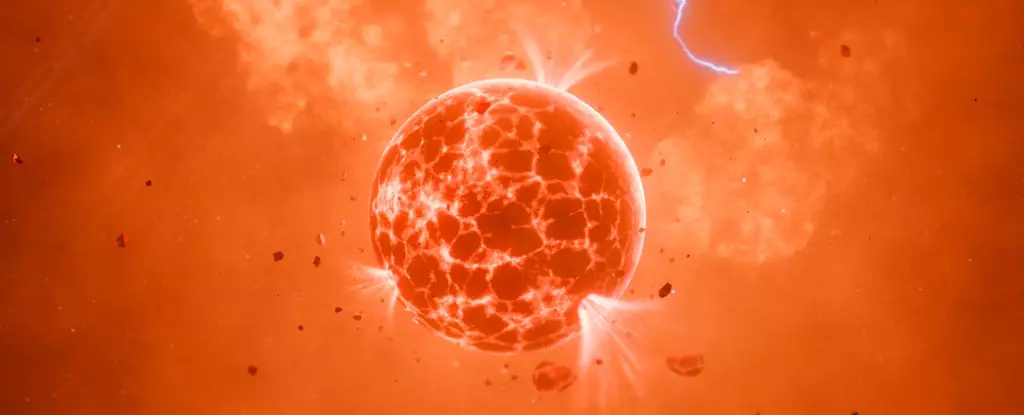In our vast universe, the search for extraterrestrial bodies has increasingly captivated the attention of astronomers. Among these celestial bodies, exomoons—satellites that orbit planets beyond our solar system—have garnered considerable interest. With the potential to harbor favorable conditions for life, finding and studying exomoons is vital for expanding our understanding of planetary systems. Recently, a remarkable discovery has illuminated the existence of a highly volcanic exomoon surrounding the gas giant WASP-49b, located a mere 635 light-years from Earth.
The nucleus of this discovery revolves around a peculiar sodium cloud detected in the vicinity of WASP-49b. This cloud is prominent enough to suggest ongoing volcanic activity, leading astronomers to hypothesize that it originates from an exomoon rather than the gas giant itself. The characteristics of WASP-49b complicate the idea of it being volcanically active; as a gas giant, it lacks the solid surface necessary for volcanic eruptions. Instead, the sodium cloud exhibits behavior inconsistent with the planet’s expected atmospheric dynamics. According to Apurva Oza, an astrophysicist at the California Institute of Technology, the sodium’s motion defies conventional understanding of planetary physics, further solidifying the moon hypothesis.
Within the Milky Way galaxy, moons appear to be abundant, as evidenced by the Solar System’s own diverse range of satellites. Currently, nearly 300 moons are documented orbiting the eight recognized planets. Despite this, the evidence for exomoons remains scarce due to the challenges associated with their detection. The instruments and methods we have managed to develop are adept at spotting exoplanets—but identifying an exomoon in the vicinity of a planet is a much more elusive task. The findings from WASP-49b could indicate that the prime will be the first of many such discoveries as our observational techniques improve.
The sodium presence was first hinted at in a 2017 analysis of WASP-49b. Subsequent studies led by Oza and colleagues put forth the theory that the sodium cloud might be linked to a volcanic exomoon. Their investigation utilized data from the European Southern Observatory’s Very Large Telescope over several nights, meticulously tracking the variations in the sodium cloud’s appearance. They discovered that this cloud’s presence is not consistent, disappearing from view as it hides behind the planet or star. This irregular pattern is a crucial clue indicating that it cannot be rooted in the exoplanet’s own atmospheric system.
An intriguing aspect of the sodium cloud is its neutral composition; such a status is remarkably transient in proximity to a star. Rivetingly, the team concluded that a continuous process generates these sodium atoms. This poses an essential question: how could this happen? The synchronization between the volcanic activity hypothesized for the exomoon and the irregular appearance of the sodium cloud became the focal point of their computer modeling efforts. They inferred that the exomoon might orbit WASP-49b approximately every eight hours, a dynamic that stirs up questions about tectonic activity and volcanic eruptions on this hypothetical moon.
Drawing parallels to our Solar System, the researchers liken the situation of this exomoon to that of Io, one of Jupiter’s many moons renowned for its volcanic activity. Like Io, the predicted exomoon is likely subjected to intense gravitational interactions, which can lead to significant geological processes. However, given the close proximity of WASP-49b to its moon, such gravitational pulls could result in a gradual decay of its orbit, culminating in a spectacular and ultimately destructive end as it spirals inward.
The prospect of discovering a volcanic exomoon introduces exciting possibilities for understanding planetary systems far beyond our own. As researchers continue to investigate the dynamics of WASP-49b and its potential moon, they are not merely unraveling the specific characteristics of this system; they are also contributing to a broader framework of knowledge surrounding the formation and evolution of celestial bodies. This discovery underlines the importance of enhancing our detection techniques and inspires future explorations that may one day reveal even more astounding secrets hidden within the cosmos. As we probe deeper into these cosmic wonders, we edge closer to comprehending our place within the universe.


Leave a Reply